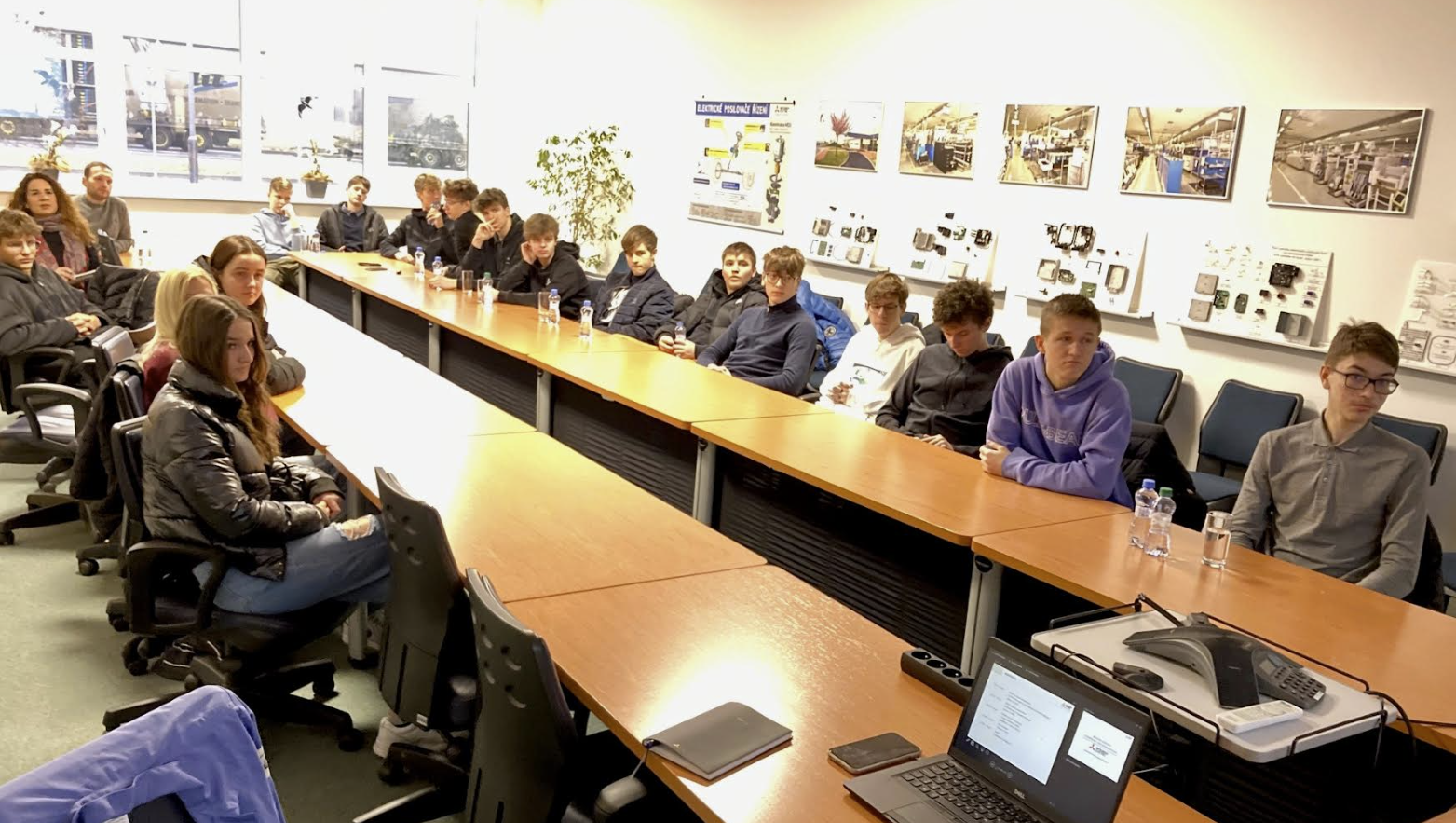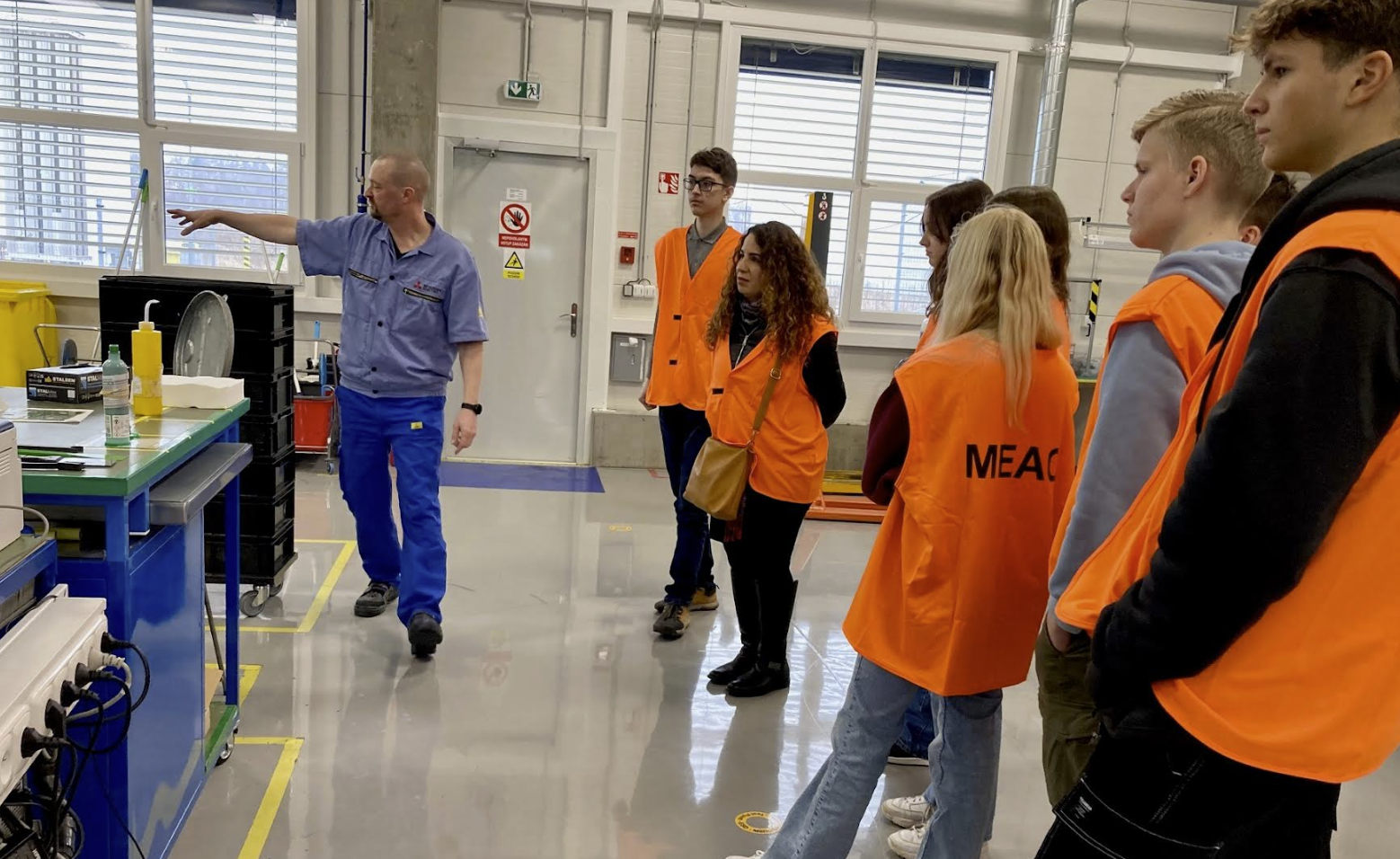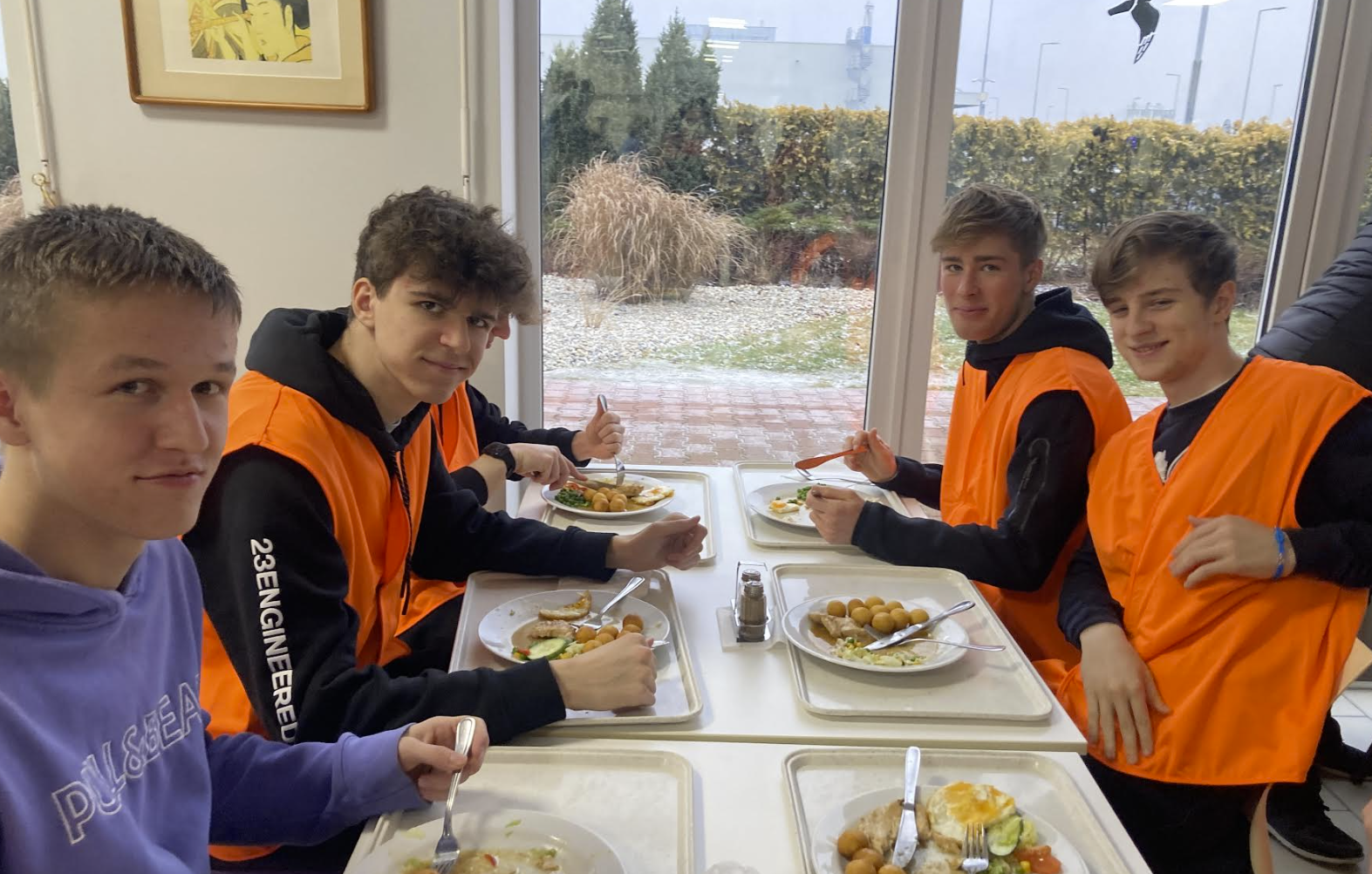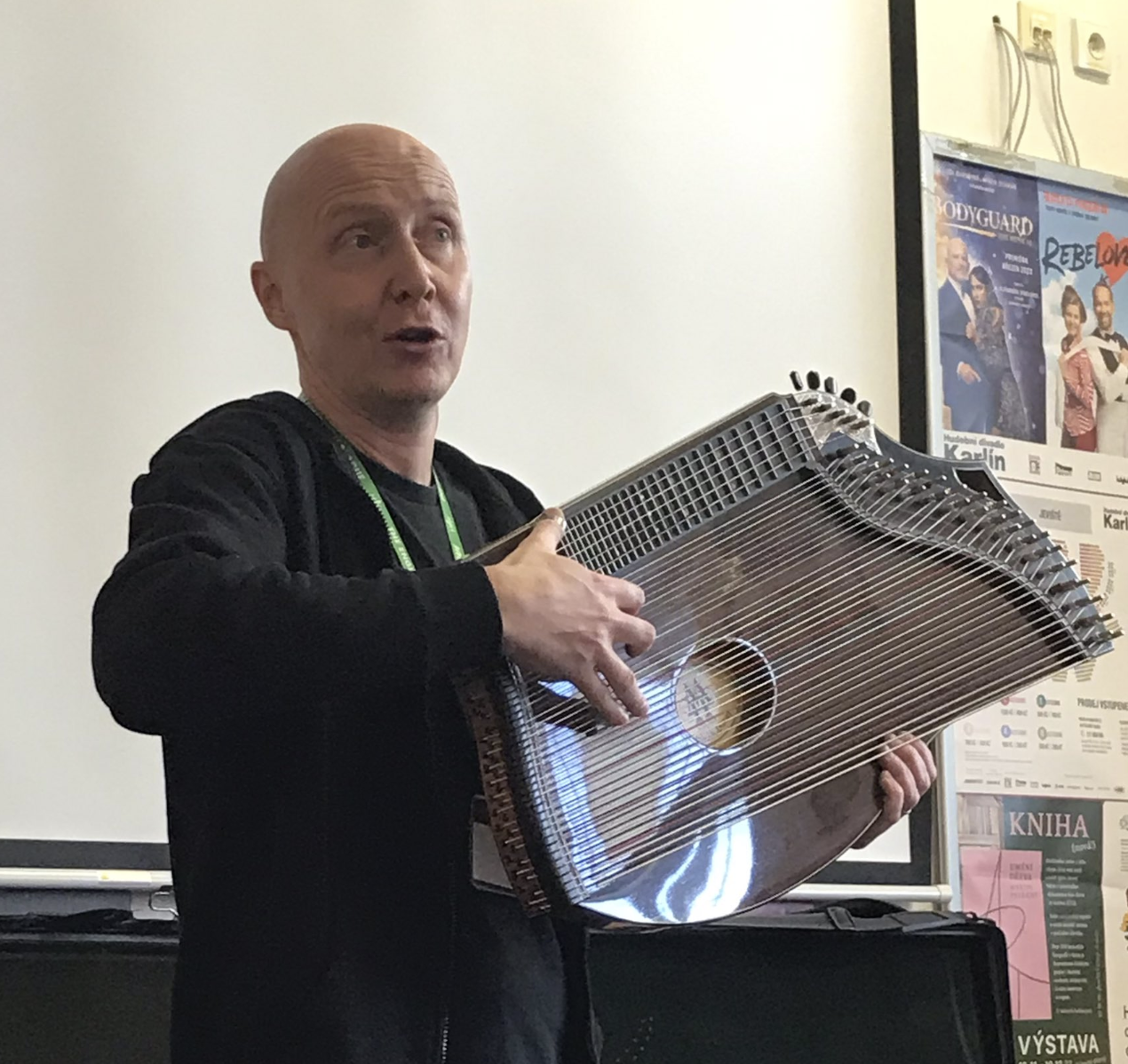Other events/Další akce
Year 4 Mitsubishi visit

Other events/Další akce
Year 4 Mitsubishi visit
The ECPA Parents´ Association is delighted to organise an evening of Mediterranean flavours and conversation for ECP's parents and teachers on 23 March. We trust this will be another of many enjoyable events that help us connect and build community.
You can RSVP via this Google form and make the payment by Friday 10 March, 2023. The price is 750 czk/person. Please pay to the account no. 481831023/0300 with reference „your name/Agora“.


Sdružení rodičů ECPA srdečně zve další rodiče a zaměstnance školy na ochutnávku středomořských specialit a vzájemnou neformální konverzaci. Akce se koná 23. března. Věříme, že to bude další z mnoha příjemných akcí, které nám pomohou vybudovat a propojit komunitu.
Účast, prosím, potvrďte na tomto odkazu. Platba je splatná do pátku 10.3.2023. Cena je 750 Kč/osoba. Platbu zašlete na č. účtu: 481831023/0300 s poznámkou „Vaše jméno/Agora.“
On Friday the 20th January, we were fortunate to visit the MEAC (Mitsubishi Electric Automotive Czech) factory, located in Slaný, which is a city near Prague. MEAC was founded in 2000 and the roots of this company can be traced back to Himej, a city in Japan. The main goal of this factory is to produce and supply electrical car components for the European automotive market. Some of their well-known customers are Mercedes-Benz, Dacia, BMW, Porsche, Toyota, and many more. In this article, we will provide you with interesting information we gathered during our visit.
Once we arrived at the factory premises, we had a quick presentation about the functioning of the company from Jitka Schmiedová, the general manager of MEAC. She explained the basic structure of MEAC, an overview of the products produced at MEAC and talked about the ISG - the Integrated Starter-Generator. This is a product that will probably take over from classic alternators with starters - it uses electric energy from the battery to start the engine running, and once the motor is running, it recharges the battery through engine movement and recuperation. It functions as a mild-hybrid system and there will likely be a rise in demand for it, with the global trend towards lowering greenhouse gas emissions.


After the presentation, we had a tour of MEAC’s EPS manufacturing line. The manufacturing line is split into two sections - motherboard manufacturing and physical components and casing manufacturing. Both manufacturing lines are almost fully automated and only require operators, responsible for supervising the process.
In the motherboard production section, we saw how electrical components such as resistors, capacitors, semiconductors and others were soldered onto laminated PCB boards. Special machines containing tapes with electrical components are used: the machine is programmed to solder particular components, which are taken from one of the tapes. Once the machine is done soldering onto the board, the board is sent for checking.
Checking the boards is done through a visual inspection by specially trained workers. They have to check for any damage, faults or incorrectly soldered components in a short period of time. What is interesting is that only women are employed to do this job - during the training process, the candidates are tested on spotting multiple issues on motherboards in a limited period of time, and only women managed to do this.
After the motherboards are checked, they are coated with substances to protect the electrical components from moisture and overheating. Later, they are sent to the physical components assembly line, where parts such as the motor, casing and others are assembled. The assembly line works like a classic conveyor belt - the parts move from one station to another, until they form a fully-assembled EPS. The assembly line is monitored by operators and contains special displays, on which the target output and actual output is compared.
Lastly, we ate lunch at the company’s canteen, where the food was delicious. After lunch, we returned to Prague.
We all enjoyed the trip and we found it very interesting. We would like to thank Ms. Vella, Jana Kučerová and Jitka Schmiedová for making this trip happen!
Hubert Szykula, Year 4


V pátek 20. ledna jsme měli to štěstí navštívit továrnu MEAC (Mitsubishi Electric Automotive Czech), která se nachází ve Slaném, což je město nedaleko Prahy. MEAC byla založena v roce 2000 a kořeny této společnosti lze vysledovat až do japonského města Himej. Hlavním cílem této továrny je vyrábět a dodávat elektrické komponenty automobilů pro evropský automobilový trh. Mezi jejich známé zákazníky patří Mercedes-Benz, Dacia, BMW, Porsche, Toyota a mnoho dalších. V tomto článku vám poskytneme zajímavé informace, které jsme nasbírali během naší návštěvy.
Po příjezdu do areálu továrny jsme absolvovali rychlou prezentaci o fungování firmy od paní Jitky Schmiedové, generální ředitelky MEAC. Vysvětlila nám základní strukturu továrny, přednesla přehled produktů vyráběných v MEAC a hovořila o ISG - integrovaném startér-generátoru. Jedná se o produkt, který pravděpodobně nahradí klasické alternátory se startéry - využívá elektrickou energii z baterie ke spuštění motoru a jakmile motor běží, dobíjí baterii pohybem motoru a rekuperací. Funguje jako mild-hybridní systém a pravděpodobně po něm bude v souvislosti s globálním trendem snižování emisí skleníkových plynů stoupat poptávka.


Po prezentaci jsme měli prohlídku výrobní linky EPS společnosti MEAC. Výrobní linka je rozdělena do dvou částí – výroba základních desek a výroba fyzických komponentů a plášťů. Obě výrobní linky jsou téměř plně automatizované a vyžadují pouze operátory odpovědné za dohled nad procesem.
V sekci výroby základních desek jsme viděli, jak se na laminované desky plošných spojů připájely elektrické součástky jako rezistory, kondenzátory, polovodiče a další. Používají se speciální stroje obsahující desky s elektrickými součástkami: stroj je naprogramován na pájení jednotlivých součástek, které jsou sejmuty z jedné desky. Jakmile je stroj napájen na desku, deska je odeslána ke kontrole.
Kontrola desek je prováděna vizuální kontrolou speciálně vyškolenými pracovníky. Během krátké doby musí zkontrolovat, zda nedošlo k poškození, závadám nebo nesprávně zapájeným součástkám. Zajímavé je, že na tuto práci jsou zaměstnány pouze ženy - během školícího procesu jsou kandidáti testováni, zda na základních deskách v omezeném čase odhalí více problémů, a to zvládly pouze ženy.
Po kontrole jsou základní desky potaženy látkami, které chrání elektrické komponenty před vlhkostí a přehřátím. Později jsou odeslány na montážní linku fyzických komponent, kde se montují díly jako motor, plášť a další. Montážní linka funguje jako klasický pásový dopravník – díly se přesouvají z jedné stanice do druhé, dokud nevytvoří kompletně smontovaný EPS. Montážní linka je monitorována operátory a obsahuje speciální displeje, na kterých se porovnává cílový výkon a skutečný výkon.


Na závěr jsme obědvali v podnikové kantýně, kde jsme dostali vynikající jídlo. Po obědě jsme se vrátili do Prahy.
Výlet se nám všem líbil a byl velmi zajímavý. Za uskutečnění tohoto výletu děkujeme paní učitelce Vella a také Janě Kučerové a Jitce Schmiedové ze společnosti MEAC!
Hubert Szykula, 4. ročník


Last week a very talented zither player, Michal Müller, came to visit our school to demonstrate an almost-forgotten musical instrument called the zither. He demonstrated a timeline of music which was written for the zither from hundreds of years ago, Czech and German folk songs which he not only played but also sang in both languages. At the end, he showed us that modern day music can be played on the zither too. He played a zither arrangement of Sting and Led Zeppelin songs. In between the compositions, he talked about the history of the zither and the reasoning behind the arrangements of the pieces he performed. I personally found it fascinating that Mr Müller managed to learn how to play the zither on his own, since there aren't many people who can play the zither. Over the years he has developed his own technique of playing and even though he did not play the “right” way he still managed to play very complicated compositions beautifully. Due to this, he had to completely relearn how to play when he attended the Conservatory of Vienna. As of now, Mr Müller is the only educated zither player and teacher in the Czech Republic.
His music and seminars can be found on: http://www.michal-muller.cz/
Mark Savov, Year 3


Minulý týden navštívil naši školu velmi talentovaný hráč na citeru Michal Müller, aby předvedl tento téměř zapomenutý hudební nástroj. Přiblížil nám časovou osu hudby, která byla napsána pro citeru před stovkami let, české a německé lidové písně, které nejen zahrál, ale i zazpíval v obou jazycích. Na závěr nám ukázal, že moderní hudba se dá hrát i na citeru. Zahrál citerovou úpravu písní od Stinga a Led Zeppelin. Mezi skladbami hovořil o historii citery a zdůvodnil nám aranžmá skladeb, které hrál. Osobně mě fascinovalo, že se pan Müller dokázal naučit hrát na citeru sám, protože na tento nástroj moc lidí hrát neumí. Postupně si vytvořil vlastní techniku hry a i když nehrál „správným“ způsobem, stále dokázal krásně zahrát velmi komplikované skladby. Když navštěvoval vídeňskou konzervatoř, musel se učit hrát úplně od začátku. Pan Müller je v tuto chvíli jediným kvalifikovaným hráčem a učitelem hry na citeru v České republice.
Jeho hudbu a semináře najdete zde: http://www.michal-muller.cz/
Mark Savov, 3. ročník


The ECP’s Lecture and Talk Programme focuses on topics related to this year’s Star theme of the year. On January 16, doc. RNDr. Petr Hadrava, DrSc. came to deliver a lecture on Astrophysics to Year 4 and 5 students with focus on what we can read from the stars. Petr Hadrava is a member of the Science Council of the Czech Academy of Sciences and he has been working at the Prague branch of the Astronomical Institute since 2004. Here are some observations from students after the lecture:
I learned about nuclear fusion and the history of astronomy.


Náš cyklus přednášek se zaměřuje na náměty související s letošním tématem školního roku Hvězda. Dne 16. ledna přednášel pro studenty 4. a 5. Ročníku doc. Předsedou se stal RNDr. Petr Hadrava, DrSc. o astrofyzice se zaměřením na to, co můžeme vyčíst z hvězd. Petr Hadrava je členem Vědecké rady Akademie věd ČR a v pražské pobočce Astronomického ústavu působí od roku 2004. Zde je pár postřehů od studentů:

